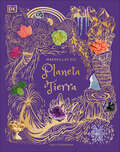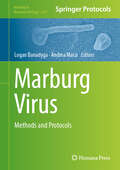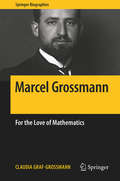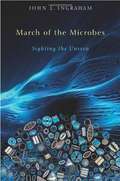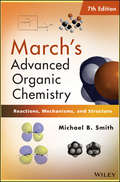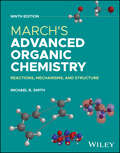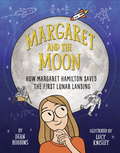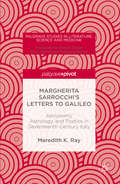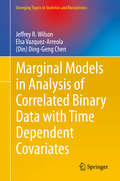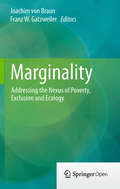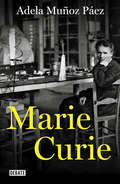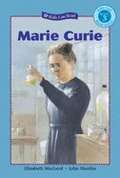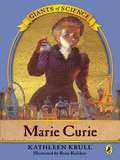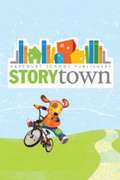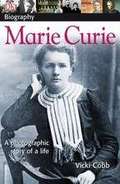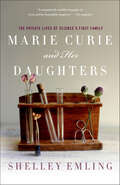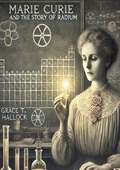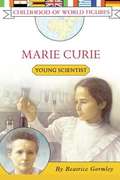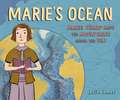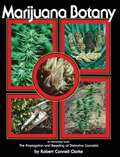- Table View
- List View
Maravillas del Planeta Tierra (DK Children's Anthologies)
by Cally OldershawExplora la belleza del planeta Tierra a través de más de 100 historias acompañadas de increíbles imágenes y fotografías.Maravillas del planeta Tierra es un libro de geología que explica de manera fácil y entretenida cómo funciona la Tierra. Los niños emprenderán un recorrido visual por sus páginas para descubrir las capas y los elementos de la naturaleza de nuestro planeta, empezando por el núcleo metálico, la dura corteza terrestre y la superficie (con sus fascinantes océanos y montañas), hasta llegar a la atmósfera y los fenómenos climáticos. En su interior, encontrarás: Narraciones acompañadas de explicaciones y datos científicos sobre el funcionamiento del planeta y los fenómenos de la naturaleza, como los copos de nieve y las perlas de las cavernas.Impresionantes fotografías que capturan la naturaleza en acción y objetos naturales muy de cerca.Páginas dedicadas a cada capa de la Tierra con información muy completa, para explorarlas con mayor detalle.¿A qué esperas para descubrir todos los misterios de nuestro cambiante planeta? Con laminado dorado en la cubierta, páginas con bordes dorados y cinta marcapáginas, este libro es un regalo muy bonito para futuros geólogos, geógrafos, ambientalistas y entusiastas del planeta Tierra de todo el mundo.Este libro pertenece a la famosa colección Anthology de DK en español. Complétala y acompaña a tu hijo a explorar el mundo natural con Maravillas naturales, a aprenderlo todo sobre los dinosaurios que gobernaron la tierra con Dinosaurios y vida prehistórica, o a sumergirse en las profundidades de los mares y océanos con Maravillas del mundo acuático.Explore the beauty and majesty of planet Earth in this compendium, with more than 100 incredible stories and images.An Anthology of Our Extraordinary Earth looks at our constantly changing planet, with striking images and scientific ideas that are easy for children to understand. Starting at the centre of the Earth, the book examines each layer in forensic detail: from Earth’s metallic core, drilling through Earth’s tough crust until emerging out onto the planet’s surface, with its lush green rainforests, sparkling oceans, and snow-capped mountains, before sailing up into Earth’s airy atmosphere. This detailed planet Earth book for kids offers: - More than 100 stories about planet Earth, from snowflakes to cave pearls, each one accompanied by a photograph and delightful illustration. - Creative photography that presents planet Earth in surprising and remarkable ways, capturing nature in action or showing intriguing features up close. - Beautiful gold foil, gilded edges, and a ribbon for keeping your place. - In-depth feature pages that examine each layer of Earth. This striking book won’t fail to excite budding geologists, geographers, environmentalists, and all-round planet Earth enthusiasts everywhere.
Marburg Virus: Methods and Protocols (Methods in Molecular Biology #2877)
by Andrea Marzi Logan BanadygaThis volume explores the latest advancements in the study of the Marburg virus. The first few chapters in this book review the challenges associated with developing effective medical countermeasures against this virus, while the rest of the chapters provide protocols on ways to achieve these goals. Some of the topics covered in this book include virus isolation and propagation; single-cell transcriptional profiling; reverse genetics systems; proteomics analyses; next-generation sequencing techniques; protocols detailing the use of various animal models including bats and nonhuman primates; and methods for assessing virus stability or validating virus inactivation. Written in the highly successful Methods in Molecular Biology series format, chapters include introductions to their respective topics, lists of the necessary materials and reagents, step-by-step, readily reproducible laboratory protocols, and tips on troubleshooting and avoiding known pitfalls. Cutting-edge and thorough, Marburg Virus: Methods and Protocols is a valuable resource for all researchers interested in advancing their understanding of this virus.
Marcel Grossmann: For the Love of Mathematics (Springer Biographies)
by William D. Brewer Claudia Graf-GrossmannZurich, summer 1912. Albert Einstein has just returned from Prague to the city on the Limmat. He sends a plea for help to his former fellow student, the mathematician Marcel Grossmann (1878-1936), for he is in need of assistance with the mathematical calculations of his general theory of relativity. What then follows is one of the most fascinating chapters of science history, with far-reaching consequences for the lives of the two friends. Marcel Grossmann’s granddaughter paints here a picture of a fiery and many-talented scientist and patriot. She traces the influence of an entrepreneurial family during Germany’s rapid industrial expansion in the late 19th century. The family’s fluctuating fortunes take the story to the vibrant city of Budapest on the Danube; they enable readers to sense the pioneering spirit at Zurich’s young Polytechnic Institute (now ETH Zurich) – but also reflect the worries and hardships of the First World War and interwar years. The Foreword is written by Prof. Remo Ruffini, founder and president of the International Center for Relativistic Astrophysics and the Marcel Grossmann Meetings. Last but not least, an extensive contribution by Dr. Tilman Sauer offers a scientific-historical appreciation of Marcel Grossmann’s enduring contributions.
March Of The Microbes: Sighting The Unseen
by John L. Ingraham Roberto KolterA Choice Outstanding Academic Title Renowned microbiologist John Ingraham rescues the supremely important and ubiquitous microorganisms from their unwonted obscurity by showing us how we can, in fact, see and appreciate them.
March's Advanced Organic Chemistry
by Michael B. SmithThe new, revised and updated 7th edition of March's Advanced Organic Chemistry clearly explains the theories and examples of organic chemistry, providing the most comprehensive resource about organic chemistry available. Readers are guided on planning and execution of multi-step synthetic reactions, with detailed descriptions of all the reactions. The first five chapters deal with the structure of organic compounds and discuss important organic chemistry bonds, fundamental principles of conformation, and stereochemistry of organic molecules, and reactive intermediates in organic chemistry. Chapters 6 to 9 are concerned with general principles of mechanism in organic chemistry, including acids and bases, photochemistry, sonochemistry and microwave irradiation, and finally the relationship between structure and reactivity. The last 10 chapters cover the nature and the scope of organic reactions and their mechanisms. The 7th edition proves again it is a must-have desktop reference and textbook for every student and professional working in organic chemistry or related fields. Key features of the 7th edition: Every chapter has been updated with the most recent reaction information with references to both the primary and review literature New to the 7th edition: 5,500 references since the last edition, updates / rewrites of the retained sections, and an updated index in Appendix B Contains more than 1650 reactions and 20,000 valuable references to the primary literature Includes appendices on the literature of organic chemistry and the classification of reactions according to the compounds synthesized Guides the reader on planning and execution of multi-step synthetic reactions, with detailed descriptions of all the reactions. Reviews of the previous edition: "...a favorite general organic chemistry text and an easy-to-use one-volume reference. We are confident that this book will remain a dominant reference and that it will reside on many chemists' personal bookshelves." -Journal of Medicinal Chemistry "Who can hope to be seriously accepted as a member of the organic chemistry community without being in possession of at least one edition of 'March'?" -Chemistry and Industry
March's Advanced Organic Chemistry: Reactions, Mechanisms, and Structure
by Michael B. SmithThe completely revised and updated, definitive resource for students and professionals in organic chemistry The revised and updated 8th edition of March's Advanced Organic Chemistry: Reactions, Mechanisms, and Structure explains the theories of organic chemistry with examples and reactions. This book is the most comprehensive resource about organic chemistry available. Readers are guided on the planning and execution of multi-step synthetic reactions, with detailed descriptions of all the reactions The opening chapters of March's Advanced Organic Chemistry, 8th Edition deal with the structure of organic compounds and discuss important organic chemistry bonds, fundamental principles of conformation, and stereochemistry of organic molecules, and reactive intermediates in organic chemistry. Further coverage concerns general principles of mechanism in organic chemistry, including acids and bases, photochemistry, sonochemistry and microwave irradiation. The relationship between structure and reactivity is also covered. The final chapters cover the nature and scope of organic reactions and their mechanisms. This edition: Provides revised examples and citations that reflect advances in areas of organic chemistry published between 2011 and 2017 Includes appendices on the literature of organic chemistry and the classification of reactions according to the compounds prepared Instructs the reader on preparing and conducting multi-step synthetic reactions, and provides complete descriptions of each reaction The 8th edition of March's Advanced Organic Chemistry proves once again that it is a must-have desktop reference and textbook for every student and professional working in organic chemistry or related fields.
March's Advanced Organic Chemistry: Reactions, Mechanisms, and Structure
by Michael B. SmithLeading reference on the theories of organic chemistry, now updated to reflect the most recent literature from 2018 to 2023 Building on the success of the 8th Edition as winner of the Textbook & Academic Authors Association 2021 McGuffey Longevity Award, the revised and updated 9th Edition of March’s Advanced Organic Chemistryexplains the theories of organic chemistry, covers new advances in areas of organic chemistry published between 2018 and 2023, and guides readers to plan and execute multi-step synthetic reactions. Detailed examples and descriptions of all reactions are included throughout the text. As in previous editions, the goal of this edition is to give equal weight to three fundamental aspects of the study of organic chemistry: reactions, mechanisms, and structure. Specific but specialized areas of organic chemistry, such as terpenes, polymerization, and steroids, have been incorporated into primary sections rather than segregated into their own sections. The first nine chapters cover general organic chemistry with theoretical principles. The next 10 chapters address reactions and mechanistic discussion. Appendix A focuses on literature references and resources. More than 4,400 references are included throughout the text. March’s Advanced Organic Chemistry provides information on: Localized and delocalized chemical bonding and bonding weaker than covalentMicrowave chemistry, use of ultrasound, mechanochemistry, and reactions done under flow conditionsAcids and bases, irradiation processes, stereochemistry, structure of intermediates, and ordinary and photochemical reactionsMechanisms and methods of determining carbocations, carbanions, free radicals, carbenes, and nitrenesAliphatic, alkenyl, and alkynyl substitution, additions to carbon-carbon and carbon-hetero bonds, eliminations, rearrangements, and oxidations and reductions This 9th Edition of March’s Advanced Organic Chemistry continues to serve as a must-have reference for every student and professional working in organic chemistry or related fields.
Mare Plasticum - The Plastic Sea: Combatting Plastic Pollution Through Science and Art
by Marilena Streit-Bianchi Margarita Cimadevila Wolfgang TrettnakThis book, written by a multidisciplinary team of authors comprising scientists, artists and communicators, explores one of the most pressing issues of our time – the menace plastics pose to marine environments and organisms. It takes readers on a journey that begins on the beaches of Galicia, where the beach litter formed the starting point for an exhibition that combines art and science to alert the audience to the urgent need for action. The journey culminates with a short “plastic story”, which reveals a disturbing vision of the future significance of plastics for humans, and an example of how comics can deliver information to a younger audience. Along the way there is plenty of fascinating science, such as insights into the impacts of plastics and microplastics; the new marine ecosystem, known as the “plastisphere”; and the current status of the oceans, from the Arctic to the Mediterranean. The book also explores the historical developments; sustainable solutions, including the use of circular economy methodologies; and protective measures, like those being tried in China and the Far East. Lastly, it describes the role played by rivers as transport vectors for plastic, with special reference to the Danube, and to complete the picture, since most of the plastic is of terrestrial origin, it investigates problems related to microplastics in soils.
Margaret and the Moon
by Dean RobbinsA true story from one of the Women of NASA!Margaret Hamilton loved numbers as a young girl. She knew how many miles it was to the moon (and how many back). She loved studying algebra and geometry and calculus and using math to solve problems in the outside world. Soon math led her to MIT and then to helping NASA put a man on the moon! She handwrote code that would allow the spacecraft&’s computer to solve any problems it might encounter. Apollo 8. Apollo 9. Apollo 10. Apollo 11. Without her code, none of those missions could have been completed. Dean Robbins and Lucy Knisley deliver a lovely portrayal of a pioneer in her field who never stopped reaching for the stars.
Margherita Sarrocchi's Letters to Galileo: Astronomy, Astrology, and Poetics in Seventeenth-Century Italy (Palgrave Studies in Literature, Science and Medicine)
by Meredith K. RayThis book examines a pivotal moment in the history of science and women’s place in it. Meredith Ray offers the first in-depth study and complete English translation of the fascinating correspondence between Margherita Sarrocchi (1560-1617), a natural philosopher and author of the epic poem, Scanderbeide (1623), and famed astronomer, Galileo Galilei. Their correspondence, undertaken soon after the publication of Galileo’s Sidereus Nuncius, reveals how Sarrocchi approached Galileo for his help revising her epic poem, offering, in return, her endorsement of his recent telescopic discoveries. Situated against the vibrant and often contentious backdrop of early modern intellectual and academic culture, their letters illustrate, in miniature, that the Scientific Revolution was, in fact, the product of a long evolution with roots in the deep connections between literary and scientific exchanges.
Marginal Models in Analysis of Correlated Binary Data with Time Dependent Covariates (Emerging Topics in Statistics and Biostatistics)
by Jeffrey R. Wilson (Din) Ding-Geng Chen Elsa Vazquez-ArreolaThis monograph provides a concise point of research topics and reference for modeling correlated response data with time-dependent covariates, and longitudinal data for the analysis of population-averaged models, highlighting methods by a variety of pioneering scholars. While the models presented in the volume are applied to health and health-related data, they can be used to analyze any kind of data that contain covariates that change over time. The included data are analyzed with the use of both R and SAS, and the data and computing programs are provided to readers so that they can replicate and implement covered methods. It is an excellent resource for scholars of both computational and methodological statistics and biostatistics, particularly in the applied areas of health.
Marginality: Addressing the Nexus of Poverty, Exclusion and Ecology
by Joachim Von Braun Franz GatzweilerThis book takes a new approach on understanding causes of extreme poverty and promising actions to address it. Its focus is on marginality being a root cause of poverty and deprivation. "Marginality" is the position of people on the edge, preventing their access to resources, freedom of choices, and the development of capabilities. The book is research based with original empirical analyses at local, national, and local scales; book contributors are leaders in their fields and have backgrounds in different disciplines. An important message of the book is that economic and ecological approaches and institutional innovations need to be integrated to overcome marginality. The book will be a valuable source for development scholars and students, actors that design public policies, and for social innovators in the private sector and non-governmental organizations.
Marginalized Reproduction: Ethnicity, Infertility and Reproductive Technologies (The Earthscan Science in Society Series)
by Lorraine Culley Nicky Hudson Floor Van RooijWorldwide, over 75 million people are involuntarily childless, a devastating experience for many with significant consequences for the social and psychological well-being of women in particular. Despite greater levels of infertility and strong cultural meanings attached to having children, little attention has been paid politically or academically to the needs of minority ethnic women and men. This groundbreaking volume is the first to highlight the ways in which diverse ethnic, cultural and religious identities impact upon understandings of technological solutions for infertility and associated treatment experiences within Western societies. It offers a corrective to the dominance of the narratives of hegemonic groups in infertility research. The collection begins with a discussion of fertility prevalence and access to treatment for minorities in the West and considers some of the key methodological challenges for social research on ethnicity and infertility. Drawing on primary research from the US, the UK, Eire, Germany, the Netherlands and Australia, the book then turns the spotlight onto the ways in which minority status and cultural and religious mores might impact on the experience of infertility and assisted reproductive technologies. It argues that more equitable access to culturally competent assisted conception services should be an essential component of a transformatory politics of infertility.
Marie Curie
by Adela Muñoz PáezLa historia oculta de Marie Curie, la madre de la física moderna. Todos creemos saber quién fue Marie Sklodowska. También conocida como Marie Curie, fue la primera mujer en recibir un premio Nobel y la primera mujer científica en ser reconocida universalmente: su descubrimiento de la radioactividad fue el inicio de una brillante carrera que culminó con la incorporación de dos nuevos elementos a la tabla periódica. Trabajadora incansable, Marie Curie vivió aparentemente ajena a las limitaciones impuestas a las mujeres de su tiempo. La realidad, sin embargo, es que fue denostada y agredida: la tildaron de impostora, de judía inmigrante, de adúltera, de aprovechada... Esta apasionante biografía nos hará descubrir con nuevos ojos la vida de una científica extraordinaria que, todavía hoy, sigue suscitando una inmensa fascinación.
Marie Curie
by Elizabeth MacleodMeet Marie Curie -- Nobel laureate and world famous scientist. Marie was the first woman to win the world's top science prize -- and the first person to win it twice.
Marie Curie
by Kathleen KrullMarie Curie, the woman who coined the term radioactivity, won not just one Nobel Prize but two?in physics and chemistry, both supposedly girl-phobic sciences. .
Marie Curie
by Vicki CobbThe book introduces young readers to two of the world's most remarkable women: scientist Marie Curie and humanitarian Mother Teresa.
Marie Curie and Her Daughters: The Private Lives of Science's First Family
by Shelley EmlingPublished to widespread acclaim, in Marie Curie and Her Daughters, science writer Shelley Emling shows that far from a shy introvert toiling away in her laboratory, the famed scientist and two-time Nobel prize winner was nothing short of an iconoclast. Emling draws on personal letters released by Curie's only granddaughter to show how Marie influenced her daughters yet let them blaze their own paths: Irene followed her mother's footsteps into science and was instrumental in the discovery of nuclear fission; Eve traveled the world as a foreign correspondent and then moved on to humanitarian missions. Emling also shows how Curie, following World War I, turned to America for help. Few people know about Curie's close friendship with American journalist Missy Meloney, who arranged speaking tours across the country for Marie, Eve, and Irene. Months on the road, charming audiences both large and small, endeared the Curies to American women and established a lifelong relationship with the United States that formed one of the strongest connections of Marie's life.Factually rich, personal, and original, this is an engrossing story about the most famous woman in science that rips the cover off the myth and reveals the real person, friend, and mother behind it.
Marie Curie and Radium
by Steven ParkerThe life of Marie Curie, her two Nobel prizes for her work on radiation and the discovery of the element Radium. The effects of radiation on her health and the many applications in the medical field as well as warfare. Also includes a historical timeline which corelates the events of Curie's life with those of the world. An excellent book for a book report.
Marie Curie and the Story of Radium
by Grace T. HallockDiscover the inspiring life and groundbreaking achievements of one of history's most remarkable scientists with Grace T. Hallock's Marie Curie and the Story of Radium. This captivating short biography brings to life the story of Marie Curie, a pioneering physicist and chemist whose discovery of radium revolutionized the scientific world and changed the course of medical research.Grace T. Hallock chronicles Marie Curie's journey from her humble beginnings in Poland to her monumental scientific achievements in France. Through vivid storytelling Hallock highlights Curie's relentless dedication, intellectual brilliance, and unwavering perseverance in the face of numerous challenges.Marie Curie and the Story of Radium delves into Curie's groundbreaking work on radioactivity, which earned her two Nobel Prizes in Physics and Chemistry—making her the first person to ever achieve such a feat. Hallock explores the significance of Curie's discoveries and their profound impact on science and medicine, including the development of cancer treatments and advancements in nuclear physics.The short book also provides a glimpse into Curie's personal life, including her partnership with her husband, Pierre Curie, and her role as a mother. Hallock portrays Curie as a multifaceted individual, balancing her scientific pursuits with her responsibilities and navigating the complexities of a male-dominated field.Join Grace T. Hallock in celebrating the life of Marie Curie and uncover the fascinating story behind one of the most significant scientific discoveries of the modern era. Marie Curie and the Story of Radium is a timeless account of curiosity, courage, and the pursuit of knowledge.
Marie Curie for Kids: Her Life and Scientific Discoveries, with 21 Activities and Experiments
by Amy O'QuinnMarie Curie, renowned for her work on radioactivity, was the first woman to win a Nobel Prize, the first person to win in two fields (chemistry and physics), and the first woman to hold a chair position at the Sorbonne. Marie Curie for Kids details Curie's remarkable life, from her childhood under a repressive czar in Poland to her tireless work supporting herself through college to meeting her ideal match in scientist Pierre Curie to her revolutionary research. Kids learn how Curie quietly flouted societal norms, working in full partnership with her husband while also teaching and raising two daughters. Scientific concepts are presented in a clear, accessible way, and a range of activities--from making Polish pierogies to exploring magnetism to using electrolysis to split water--allow for exploration of Curie's life, times, and work.
Marie Curie: Young Scientist (Childhood of World Figures Series)
by Beatrice GormleyMarie Curie was a world-renowned scientist who made many important discoveries, as well as a great teacher and a mother, but her accomplishments didn't come easily. Born Maria Sklodovska in 1867, Marie grew up in Russia-occupied Poland where schools were not allowed to teach Polish history or language, and lab experiments were forbidden in science classes. When Marie was young,her mother and eldest sister both passed away. Marie was determined not to let hardships get in the way of her dreams. She went on to win two Nobel Prizes, one each in physics and chemistry, making her the first woman to win the award and first person ever honored with two of them. Read all about the clever young girl whose hard work lead to brilliant contributions in the field of science.
Marie's Ocean: Marie Tharp Maps the Mountains Under the Sea
by Josie JamesA National Science Teaching Association Best STEM Book of 2021A NCSS Notable Social Studies Trade Book for Young Readers Honor SelectionA Junior Library Guild SelectionA mixed-format picture book biography of Marie Tharp, the remarkable woman who mapped the ocean floor. Marie Tharp earned a graduate degree in geology in the 1940s, at a time when scientific careers were largely unavailable to women. Marie’s vision and tenacity paved the way for her to become one of the greatest oceanographic cartographers of the 20th century. She was the first person to map the ocean floor and discover the 40,000 mile long Mid-Ocean Ridge and Rift Valley. Her astounding discovery supported the theory of continental drift, which led to the theory of plate tectonics. But it was not an easy road, and Marie struggled to receive the credit she deserved for her discovery.From Marie Tharp’s early childhood dreams all the way to her defining achievement, Josie James's Marie's Ocean is the story of one of earth science’s greatest hidden figures. Christy Ottaviano Books
Marijuana Botany
by Robert Connell ClarkeMarijuana Botany presents the scientific knowledge and propagation techniques used to preserve and multiply vanishing Cannabis strains. Also included is information concerning Cannabis genetics and breeding used to begin plant improvement programs. The book presents scientific and horticultural principles, along with their practical applications, necessary for the breeding and propagation of Cannabis and in particular, marijuana. It will appeal not only to the professional researcher, but to the marijuana enthusiast or anyone with an eye to the future of Cannabis products.
